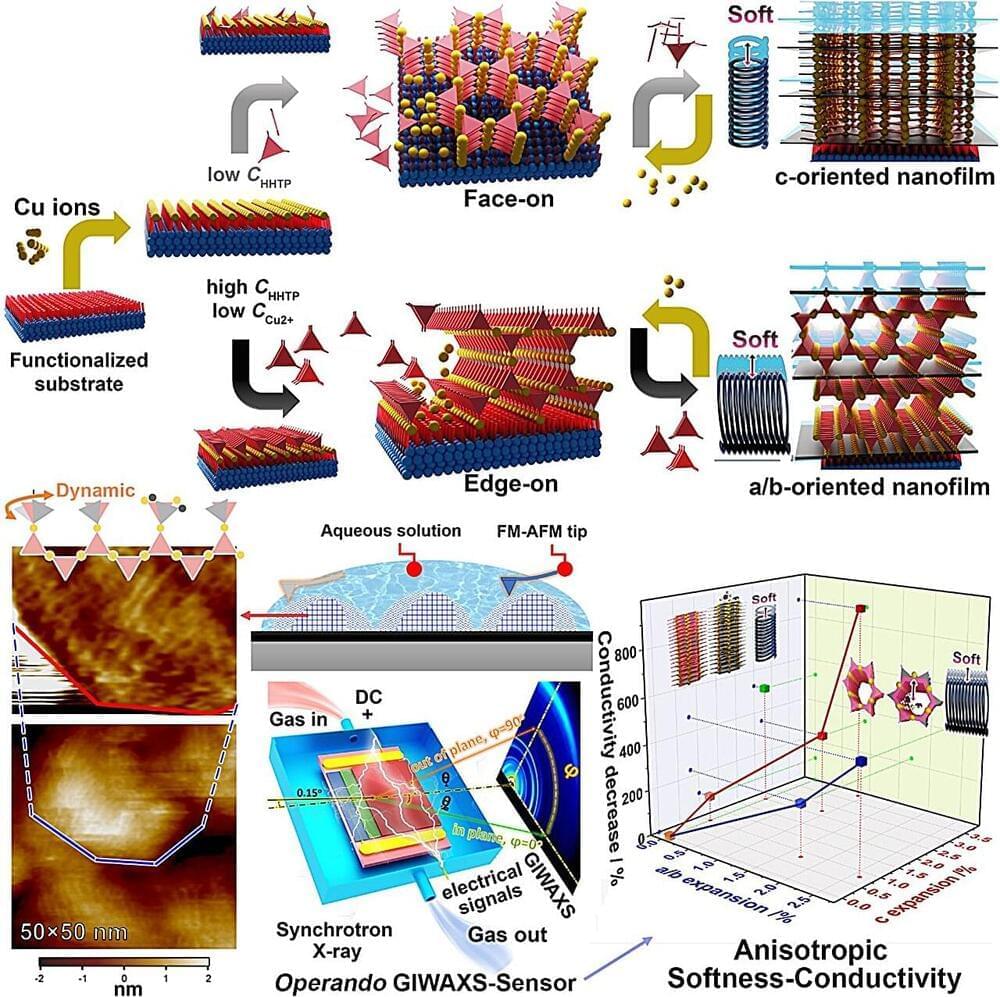Researchers from the Institute of Process Engineering (IPE) of the Chinese Academy of Sciences and Kyoto University have proposed a strategy to grow “face-on” and “edge-on” conductive metal-organic frameworks (cMOF) nanofilms on substrates by controlling the “stand-up” behaviors of ligands on various surfaces to overcome the difficulty in the orientation control of such films.
They established operando characterization methodology using atomic force microscopy and X-ray to demonstrate the softness of the crystalline nanofilms and reveal their unique conductive functions. The study was published in Proceedings of the National Academy of Sciences on Sept. 25.
CMOFs have great potential for use in modern electrical devices due to their porous nature and the ability to conduct charges in a regular network. cMOFs applied in electrical devices normally hybridize with other materials, especially substrates. Therefore, precisely controlling the interface between a cMOF and a substrate is crucial.
